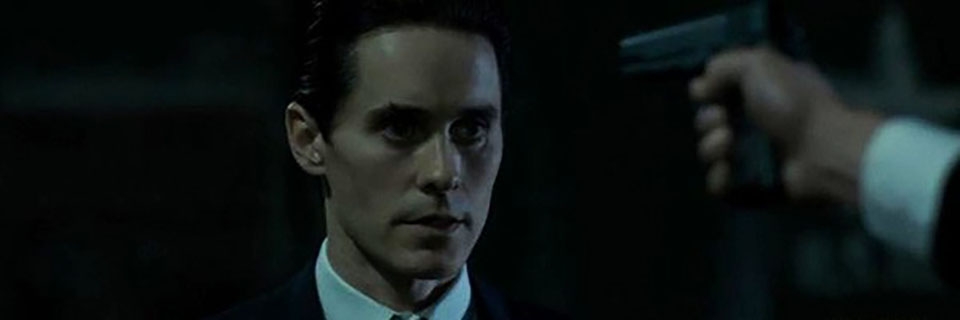11/29/18
Timothy Rush | Staff Writer
As Dreamworks’ own Voltron: Legendary Defender comes to a close in its final season, Netflix makes the move in remaking another classic cartoon in its most recent Netflix Original Series, She-Ra and the Princesses of Power.
Initially pitched to Netflix by showrunner Noelle Stevenson as a single-season remake of the classic She-Ra: Princess of Power, the network picked it up and began production with four seasons of 13 episodes each in production. Stevenson, an animator and Eisner Award recipient for her work on the comics Nimona and Lumberjanes, wanted to remake the series in the aim of portraying She-Ra as a hero in her own right and the cast to have their own identities beyond their roles as princesses.
The story takes a relatively simple approach so as to focus on the characters themselves, and strongly mirrors the overarching story of the original. The fictional world of Etheria is ruled by the evil Horde who is engaged in a vicious war with the princesses, and it is up to the series’ protagonists to stop them at all costs. To do this, they set out to reform the Princess Alliance, an alliance of the various princesses from around Etheria to stand against and overthrow the Horde.
With this focus on characters in mind, we are given a diverse cast of characters on both sides. Adora (Aimee Carrero) is an orphan raised within the Horde as an elite soldier, but upon finding a magic sword discovers her identity of She-Ra, and now seeks to free Etheria from the evil Horde upon discovering how she’s been lied to her entire life about the real circumstances of the war. She is joined by Glimmer (Karen Fukuhara), Princess of Bright Moon and commander of the rebellion against the Horde, and Bow (Marcus Scribner), Glimmer’s best friend and exceptional archer. Hordak (Keston John) rules the Horde from his throne in the Fright Zone, entrusting most activities to the mysterious Shadow Weaver (Lorraine Toussaint), who uses this position to carry out her hunt to bring Adora back into the Horde. Adora herself is directly opposed by Force Captain Catra (AJ Michalka), her former best-friend-turned-enemy.
The series follows a chronological serialization, where a single episode typically focuses on Adora recruiting a new princess to the alliance, having us get to know princesses from various different realms and personalities. Perfuma (Genesis Rodriguez), of the pacifist and nature loving Plumeria; Mermista (Vella Lovell), of the oceanic Salinea; Entraptra (Christine Woods), of the tinkering realm of Dryl; and Frosta (Merit Leighton), of the aristocratic and neutral Kingdom of Snows are introduced over the course of the season. Episodes that do not focus on the recruitment of a particular princess instead focus on Adora and her friends thwarting the activities of the Horde and her own journey of self-discovery in her new identity as She-Ra, the Princess of Power.
As one can guess from such a wide host of characters, we’re given vast diversity. Diversity was indeed something that Stevenson had in mind for the show. She-Ra, in its short time running, has introduced a cast of characters that are diverse in both race and sexuality. Adora herself is shown to be a queer icon, with hints of her attraction to Catra littered throughout the series, something that appears to be reciprocated by Catra, as she feels betrayed on a very deep level by Adora’s defection. Characters Netossa (Krystal Joy Brown) and Castaspella (Sandra Oh) make up a confirmed lesbian couple introduced later in the season. And Horde soldier and princess Scorpia (Lauren Ash) develops feelings for Catra during their time working together in the Horde.
Diversity in character is something that also appears, with characters taking various personalities that both hurt and help the group. Adora is strong, dedicated, but torn between her identities of the heroic She-Ra and the former Horde soldier Adora. Glimmer shows herself as confident and hard headed, but this is shown to hide deeper insecurities that come to light throughout the series. Catra is the ruthless and callous Horde soldier that wants nothing more than to exact revenge on the object of her vitriol, Adora, but she betrays her true feelings in one of the best cases of character depth and development throughout the series.
Unfortunately, this depth and diversity does not extend to the rest of the cast. Despite having diverse personalities unique to each of them, most princesses don’t show much depth beyond their initial appearance in the season. While this does give them plenty of opportunities to further flesh them out in the future seasons, it would have been nice to have more depth to get people interested in them more beyond their base personality and power. The only character aside from the main cast that gets any real development is Entraptra, as the show explores her insecurities and her fears.
Animation-wise, this show takes a traditional animation approach with influences from Japanese anime. The art itself mirrors a combination of Avatar: The Last Airbender and Steven Universe in terms of how it looks and is animated. While it looks more simplistic than what most may desire from a She-Ra remake, it still looks quite beautiful at times and the animation really shines in how it shows characters interacting with each other, obviously pulling from Stevenson’s desire for a show focused on the characters.
The animation style also lends itself well to the aim of showing a diversity of various characters’ bodies as well. While Adora takes the look of a traditional teenage girl, and Bow as an athletic boy, others do not have this standard approach. Glimmer is portrayed as short and with more body fat, Mermista is portrayed as athletic and Perfuma is shown as slender. Frosta is an 11-year-old, and you can tell by how she is portrayed while standing among the other characters. Scorpia is shown to have a muscle-builder physique, likely emphasizing her military background. This wide array of body types shows a degree of support for body positivity on the part of the showrunners, showing how people of various appearances can be just as valuable and unique. A good theme to have.
The unique diversity amongst the characters and the emphasis on their interpersonal relationships is exceptional, and will leave the audience feeling the genuineness between characters no matter the dynamic portrayed. And these relationships are ultimately what pushes the story forward, which is done in a way that is both believable and phenomenal.
All-in-all, She-Ra and the Princesses of Power is an amazing reimagining of the cultural classic and definitely worth a watch by both fans of the old and newcomers to the series. Its focus on characters and utilization of diversity gives this series a great foundation for a wonderful viewing experience. This is one remake that audiences should definitely give a chance, and will most certainly join Voltron: Legendary Defender as another successful remake of a beloved cartoon.



